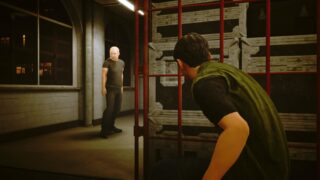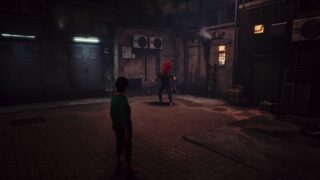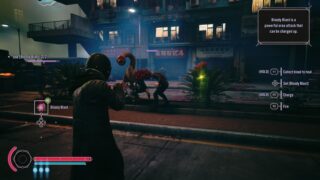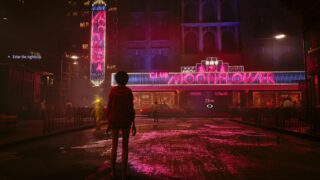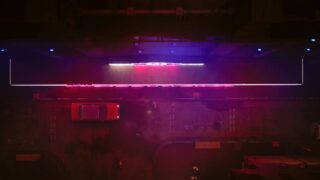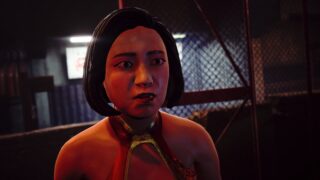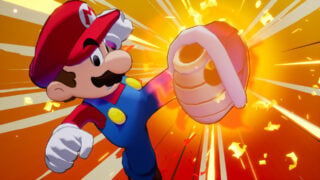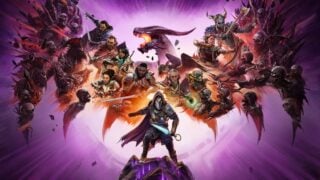Slitterhead is confidently weird, but greatly flawed
Silent Hill creator Keiichiro Toyama’s latest oddity is let down by below par visuals and gameplay
- Director
- Keiichiro Toyama
- Key Credits
- Akira Yamaoka (Composer ), Junya Okura (Game Director )
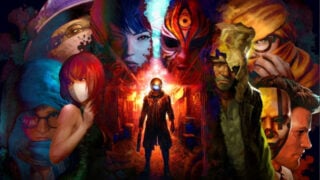
Slitterhead feels like a PS3 game that never existed. It’s so profoundly strange in so many ways, and frustrating in others, but you can never accuse it of being anything other than 100% sincere.
It’s awkward to control, it doesn’t look great visually, and it’s profoundly low-budget in several ways, but nevertheless, we’re happy it exists. It’s the kind of game that wouldn’t have gotten a Western release 20 years ago. Fodder for a “most expensive PS2 games” list after a short print run. It is, after all, from director Keiichiro Toyama, the man behind cult classics Silent Hill, Gravity Rush, and Siren.
In Slitterhead, players embody a shapeless, bodiless entity that can possess humans. Set in a fictional ’90s Hong Kong-style city, bodies are piling high after repulsive monsters, known as Slitterheads, quietly begin killing citizens. The player, named Night Owl, alongside Familiars, which are people that can be possessed but still maintain bodily autonomy, must get to the bottom of the mystery of the Slitterheads.

The game’s main mechanic sees players possess humans in order to either solve puzzles or fight Slitterheads. Puzzles can be things like accessing locked areas of buildings by possessing a body through a window or taking over the body of someone who’s permitted to access that restricted zone.
These puzzles are never difficult to complete, but there’s an occasional novelty to them. An early puzzle sees the player trying to access a brothel in order to find a sex worker the player believes to be a Slitterhead. While the owner of the brothel won’t speak to Julee since she’s a young girl, they will speak to a sweaty old man that the brothel thinks they can make some money from.
Similarly, when the game’s truly turgid stealth sequences crop up, one of them is solved by possessing a man covered in his own sick from drinking so much that he can pass through a bar undetected. The stealth sequences are particularly contrived. There are in-universe reasons as to why some people can’t be possessed, but they’re paper thin and feel more like a gameplay roadblock than anything else.
Slitterhead is mission-based. You’re dropped into the city where invariably, you’ll either follow a trail of Slitterheads through a back alley, engage in some shaky stealth, or fight several Slitterheads at once. These missions are short and bookended with stilted, largely un-voice-acted cutscenes. What makes these cutscenes disappointing is the presence of the game’s most distracting issue.
Virtually every NPC in the game can be possessed. As such, if you complete a fight or enter a cutscene as a possessed human, that human is present in the cutscene rather than the well-designed main characters. The game’s NPCs have Lego hair, melted skin, and soulless eyes. They’d be fine if their only function were set dressing that you ran past, but the focus on them, unfortunately, means that their low quality comes front and center.
This decision is not only baffling as it robs time spent with the more interesting main characters, but the NPC character models are so low quality that it makes the whole game feel even cheaper than it already does. It’s unbelievably distracting.
The game’s combat is functional but never feels particularly rewarding. Each NPC you possess can use blood weapons, which are typically melee weapons and a few abilities. The idea is that normal NPCs can only take one or two hits before they die, so your goal is to do some damage to an enemy, and then swap out to another NPC before the first one is killed. Familiars have expanded move sets and can take more damage.
“The game’s NPCs have Lego hair, melted skin, and soulless eyes. They’d be fine if their only function were set dressing that you ran past, but the focus on them, unfortunately, means that their low quality comes front and center.”
This makes for clumsy fights wherein NPCs appear out of nowhere to facilitate the swapping of bodies. We’d have preferred a much more fleshed-out Familiar combat system, as some abilities like the Blood Blade are actually pretty cool. It’s just a shame they’re in service of a combat system that’s so basic.
Where Slitterhead gets absolutely top marks is in monster design. The Slitterheads themselves are disgusting, and fans of body horror, or some of Toyama’s earlier work will be right at home. There’s perhaps an argument that the less-than-realistic human NPCs are actually vital in making the game playable without regurgitating your lunch.
The city streets make for a compelling setting for Slitterhead. The winding alleys and precarious rooftops create an environment that has a lot more to it than it may initially seem. These environments facilitate things like chasing Slitterheads through the streets, but they also make the area feel less like a video game environment and more naturalistic.

You do spend a huge amount of time in the same area, but the game does at least try to dress it up slightly differently each time. It’s almost like a movie set where you can tell that the architecture is always the same, but props and shop fronts have been dressed up to portray a different scene.
We enjoyed thinking about Slitterhead a lot more than we liked playing it. It kicks off with a compelling concept, and while the monster designs are horrific, and the city streets make for an interesting location, it’s weak in several areas. Outside of some nice lighting, it’s a profoundly ugly game, with NPCs that look jarringly out of place. That wouldn’t be too much of a deal breaker if the game’s central conceit didn’t mean that virtually every cutscene stars their soulless, plasticine faces of horror.
There’s every chance that Slitterhead will become a cult classic, but in reality, it’s not a great game. It’s interesting, and we love that games like this can still get made, but it’s an experience that’s better appreciated than it is played. Uncompromisingly weird and inventive, the actual gameplay part of Slitterhead is below par.
Slitterhead isn't very good, but it is very interesting. In an age of remakes, sequels and safe bets, it's heart-warming to see something that's so clearly such a singular vision. We're disappointed that vision is sold short by basic combat and a focus on the game's ugly characters, but we're glad it exists and would welcome more attempts like it.
- Confidently weird
- An interesting setting
- Combat is dull
- NPCs look terrible despite being the stars of the show
- Short, boring mission structure






